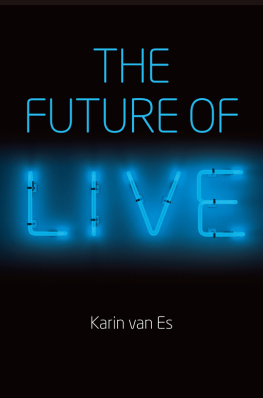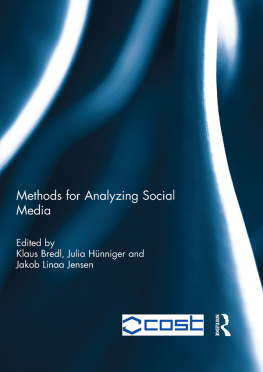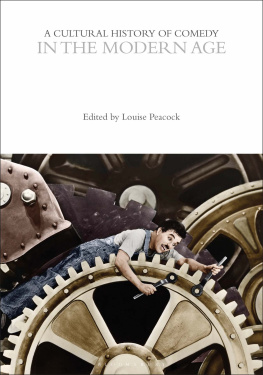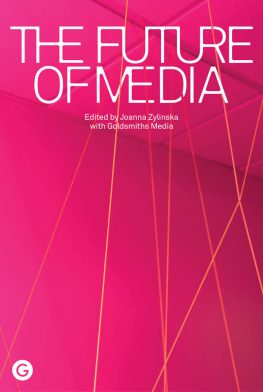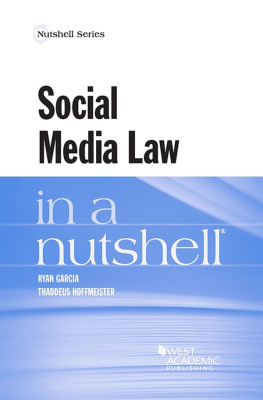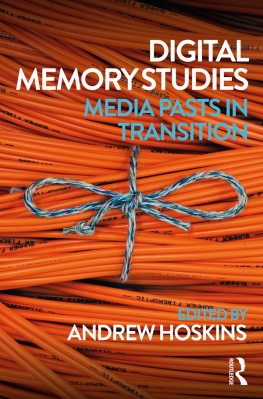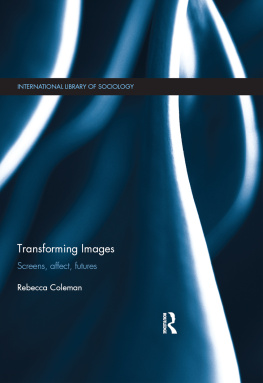
Copyright page
Copyright Karin van Es 2017
The right of Karin van Es to be identified as Author of this Work has been asserted in accordance with the UK Copyright, Designs and Patents Act 1988.
First published in 2017 by Polity Press
Polity Press
65 Bridge Street
Cambridge CB2 1UR, UK
Polity Press
350 Main Street
Malden, MA 02148, USA
All rights reserved. Except for the quotation of short passages for the purpose of criticism and review, no part of this publication may be reproduced, stored in a retrieval system, or transmitted, in any form or by any means, electronic, mechanical, photocopying, recording or otherwise, without the prior permission of the publisher.
ISBN-13: 978-1-5095-0263-9
ISBN-13: 978-1-5095-0264-6(pb)
A catalogue record for this book is available from the British Library.
Typeset in 10.5 on 12 pt Sabon
by Toppan Best-set Premedia Limited
Printed and bound in Great Britain by Clays Ltd, St. Ives PLC
The publisher has used its best endeavours to ensure that the URLs for external websites referred to in this book are correct and active at the time of going to press. However, the publisher has no responsibility for the websites and can make no guarantee that a site will remain live or that the content is or will remain appropriate.
Every effort has been made to trace all copyright holders, but if any have been inadvertently overlooked the publisher will be pleased to include any necessary credits in any subsequent reprint or edition.
For further information on Polity, visit our website:
politybooks.com
Preface
Liveness has been, and still is, a persistent and much-debated concept in media studies. The emergence of social media, following the dot-com bubble bust of the early 2000s, has brought new forms of liveness into effect. These challenge common assumptions about and perspectives on liveness, and provoke a revisiting of the concept. This book develops a comprehensive understanding of what liveness is and seeks to clarify the stakes surrounding the category of the live.
So far, considerations of liveness have been partial: they tend to be limited in outlook to the notion's relevance to the particular cases under scrutiny. As such, they promote either an ontological, phenomenological, or rhetorical perspective on the live. Each of these perspectives highlights some but obscures other dimensions of the notion. Reinterpreting liveness for the social media era, this book develops a method by which to combine those perspectives, charting liveness in terms of constellations. By analyzing the live as it manifests itself in four cases (Livestream, e-Jamming, The Voice, and Facebook), it explores the operation of the category of liveness and pinpoints the conditions under which it comes into being. The analyses it provides also facilitate a comparison of the mechanisms of control of broadcast media and social media, and a broader reflection on how these media relate to each other.
Specifically, the book should be of interest to upper-level students and researchers in media studies. It touches upon topics debated by radio, theater, film, television, and new media scholars. For television and new media researchers it is of particular interest, as it raises critical questions about today's social media and how we should envision their relation to broadcast media.
Acknowledgments
This book is the product of a series of encounters and exchanges that took place over the course of several years. Above all, I must thank Eggo Mller and Sonja de Leeuw, not only for the job opportunity that allowed me to obtain my Ph.D., but also for their continued support throughout the research period. I am particularly grateful to Judith Keilbach for sparking my interest in the topic of liveness, and for being a great sparring partner ever since.
I am furthermore greatly indebted to Nick Couldry, who has inspired my thinking on media, and was so generous to meet and discuss with me the ideas for this book. But I also owe thanks to Nanna Verhoeff, William Uricchio, Frank Kessler, Jos van Dijck, Joost Raessens, and three anonymous reviewers for engaging with my work and raising pertinent questions that have vastly helped sharpen my arguments. My gratitude goes as well to Jim Gibbons, Ronny Temme, and Claudy op den Kamp for their interventions and contributions in the final phase. At Polity, I thank Andrea Drugan and Elen Griffiths for guiding me through the publication process.
Above all, I want to thank my family and friends for their continued encouragement and much-needed sense of relativism. And finally, much affection to Eef, for her critical comments, as well as her love and support every step of the way.
Amsterdam, March 2016
Introduction
It's early January 2016, and, over coffee, my neighbor Ronny tells me that several times a year she takes the ferry to the cinema across the IJ lake in Amsterdam to watch broadcasts of operas and ballets staged at London's Royal Opera House in Covent Garden. These performances are simulcast live to 15,000 cinemas in more than thirty-five countries. Ronny speaks enthusiastically of these occasions. She revels in the camerawork and enjoys the comfort of the cinema. During intermissions, she explains, tweets from viewers are displayed on screen, making visible, as it were, other viewers watching in cinemas across the globe. She has a friend in England who also attends these screenings, and afterward they evaluate the performances over the phone.
Ronny's account draws attention to the continuing reliance on the live in our present-day media landscape and raises several important considerations about it. These screenings, for instance, underscore how live broadcastscontrary to the idea that liveness provides a natural and direct connection to a given occasionare heavily produced (Caldwell 2000; Scannell 2001). To avoid transmitting boring footage of the operas and ballets taken from a single stationary camera, the broadcasts actively switch between cameras, offering multiple points of view. In overall effect, cinemagoers here are offered an experience unlike that of anyone actually present at the performances. This, of course, has been the case for live televised sports for at least a half-century. But these live-streamed events also illustrate that the live is no longer a property of radio or television alone; the live media landscape is now multifarious. Not only do services like Twitter make their own claims to be live, but they also intersect with traditional forms of liveness. In the above example, Twitter interacts with the streaming video shown in theaters worldwide, as audience members are actively invited to comment on the performance.
That the descriptor live has been used in relation to multiple media forms has magnified the confusion about what it means for a medium to be live. People tend to have a general notion of the term's meaning. But when ideas about the live are put to critical scrutiny, the concept proves to be more complex than one might think. Consider these opera and ballet simulcasts: when they're being promoted as live, what is actually being promised? Why does it matter that they are live? What do viewers expect from them?
Philip Auslander (2008) has traced the origins of the term live to 1934, when broadcast media confused the opposition between live and recorded performances, creating a crisis. He explains the crisis in terms of how radio [unlike the gramophone] does not allow you to see the sources of the sounds you are hearing; therefore, you can never be sure if they are live or recorded (Auslander 2008, 59). Live was introduced as a term so that the distinction could be made in these cases as well (ibid., 60). That radio was a live medium to begin with had been a matter of strategic choice. As Robert Vianello explains,
Next page
